Staying hydrated is one of the top ways to start down the path of healthy living. For many, reusable water bottles help keep up with that magical number of doctor-recommended ounces we’re supposed to down every day. Plus, investing in reusable water bottles is a phenomenal way to help reduce the plastic waste in landfills and carbon footprints. And they come in all sorts of shapes, colors, and materials. Looking at you, Starbucks! There’s a dark side to these water containers, though. In the blink of an eye, you could be dealing with mold in a water bottle.

Which probably makes sense for a lot of people. Just think about it. While washing dishes or getting ready to throw in a pod into the dishwasher after dinner, was that water bottle included in the sudsy process? Or did you grab it and walk out of the kitchen? The same water bottle that went with you to work, was dropped onto the floor a few times, got tossed in a gym bag, and touched your mouth 72 times?
Chances are, it was the latter option! And now you’re probably taking a critical look at your container… Which is not a bad thing, because this fungus among us loves our water bottles just as much as we do.
No one wants to drink moldy water, which is why it’s important to know how to prevent mold in a water bottle and what to do if you find it.
HOW CAN MOLD IN A WATER BOTTLE HAPPEN?
Water bottles can be the perfect location for mold to start growing. The best way to understand how it can occur is to know all about this fungus.
MOLD FAST FACTS
There are over 100,000 species of mold identified so far, and they exist all over the world. Each species of mold reproduces by creating microscopic spores.¹’² Many of these spores become airborne and ride the wind to wherever that leads.
Sometimes, that’s right through your front door, into your car, on your pet’s fur. Similar to the seeds of a plant, these spores are particles, meaning that they’re not alive. Also, like a seed, they need certain ingredients to transition into a mold colony and a living, reproducing organism.
THESE FOUR COMPONENTS OF LIFE ARE:³
- Temperature: most prefer 40-90 degrees Fahrenheit
- Food: spores are kind of like teenagers and eat almost anything
- Oxygen: this barely counts, which is why mold can grow inside walls
- Moisture: just a little bit of wetness will do
With temperature and oxygen easy boxes to tick off, spores typically only need food and moisture to transition into the world of the living. Given those two components for 24–48 hours, a spore will channel its inner Cinderella and turn into a pumpkin (aka a colony). Once established on a surface, that mold colony will then begin to release spores into the surrounding air. Some species also release microscopic toxins called mycotoxins when they feel threatened as well.⁴

THE WATER BOTTLE FACTOR
Thinking about the components above, it’s easy to see how mold in a water bottle can occur. There’s plenty of water (obviously) and tons of organic particles floating around. Every time you put your mouth on the bottle, skin cells, food particles, and whatever else gets stuck to the surface or go inside. These offer a variety of edible options that a mold spore can use as a food source.
It’s kind of gross to think about, but it’s true. If one of those microscopic spores flies into that water bottle, it will think it has won the moldy lottery dream home. Unless proper steps are taken to prevent growth, mold in a water bottle can pop up before you know it. And, if you rarely look inside the bottle, it could be growing for quite some time before it’s noticed.
The issue with that scenario is that, once the mold starts to grow, it begins releasing spores and sometimes toxins. So all of the water inside of the bottle is then tainted with all sorts of moldy particles.
As you can imagine, that’s not great for your health.
IS MOLD IN A WATER BOTTLE DANGEROUS?
Mold exposure affects every individual differently. While one person exposed to mold may only develop the occasional runny nose and cough, another may experience 17 different symptoms that seem to get worse as exposure continues. Still, exposure to this indoor contaminant can cause adverse health reactions, making it something we want to avoid.
Researchers are still attempting to determine exactly how mold affects the human body, but it’s a tricky subject to nail down. Factors such as genes, species of mold, presence of mycotoxins, immune system status, and length of exposure all play a role. What they do know is that those with developing immune systems, compromised immune systems, and the HLA-DR gene are more likely to develop symptoms faster and to a greater extent.
WHY DO SYMPTOMS DEVELOP?
A common misconception is that since mold is everywhere, it doesn’t cause health problems. That’s absolutely not true.
Encountering moldy particles outdoors is very different. Space is abundant for mold spores to disperse throughout, so we only encounter a few here and there during the day. Typically, the body will deploy the immune system, which can easily deal with getting rid of the foreign particles.
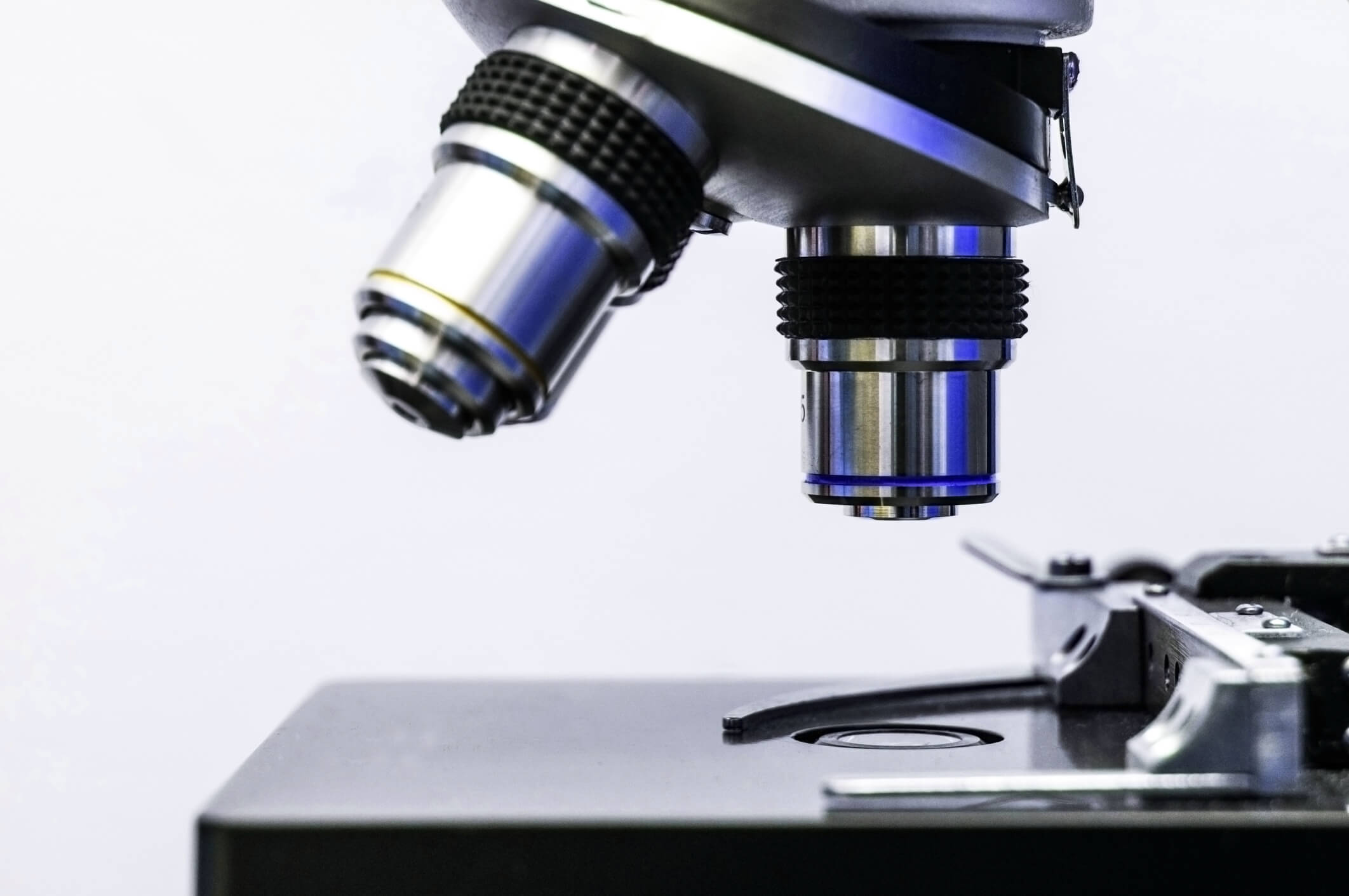
A special note: The particles being discussed are tiny. So small, in fact, that they can be inhaled, ingested, or absorbed through something like a cut. Classified as particulate matter, their ability to make their way into our bodies is what makes them a no-no for our health. ⁵
When mold is in a home or a water bottle, though, the immune system isn’t simply facing a few particles a day. It’s facing an army of them every time someone is inside the home or takes a sip of water from their bottle. That’s an enormous task and can lead to the immune system eventually getting overrun and malfunctioning.⁶’⁷’⁸’⁹’¹⁰ An immune system on the fritz is an open door for autoimmune conditions such as Lyme disease and Epstein-Barr virus to walk right in.
MOLD IN A WATER BOTTLE SYMPTOMS INCLUDE:
- Coughing
- Watery eyes
- Hair loss
- Respiratory issues
- Chronic fatigue
- Digestive problems
- Rashes
- Mood swings
- Brain fog
- Runny nose
- Neurological issues
As mentioned above, no two experiences with exposure are the same. Still, the chance of adverse health reactions developing is enough of a reason to take action to avoid mold in a water bottle. Not only that, but steps to prevent mold in water bottles also help remove other harmful microscopic particles that can build up inside of these containers, including viruses and bacteria.
HOW DO YOU KNOW IF THERE’S MOLD IN A WATER BOTTLE?
Determining if there’s mold in a water bottle requires using our senses, including a visual inspection with a flashlight, a good sniff, and an assessment of our overall health.
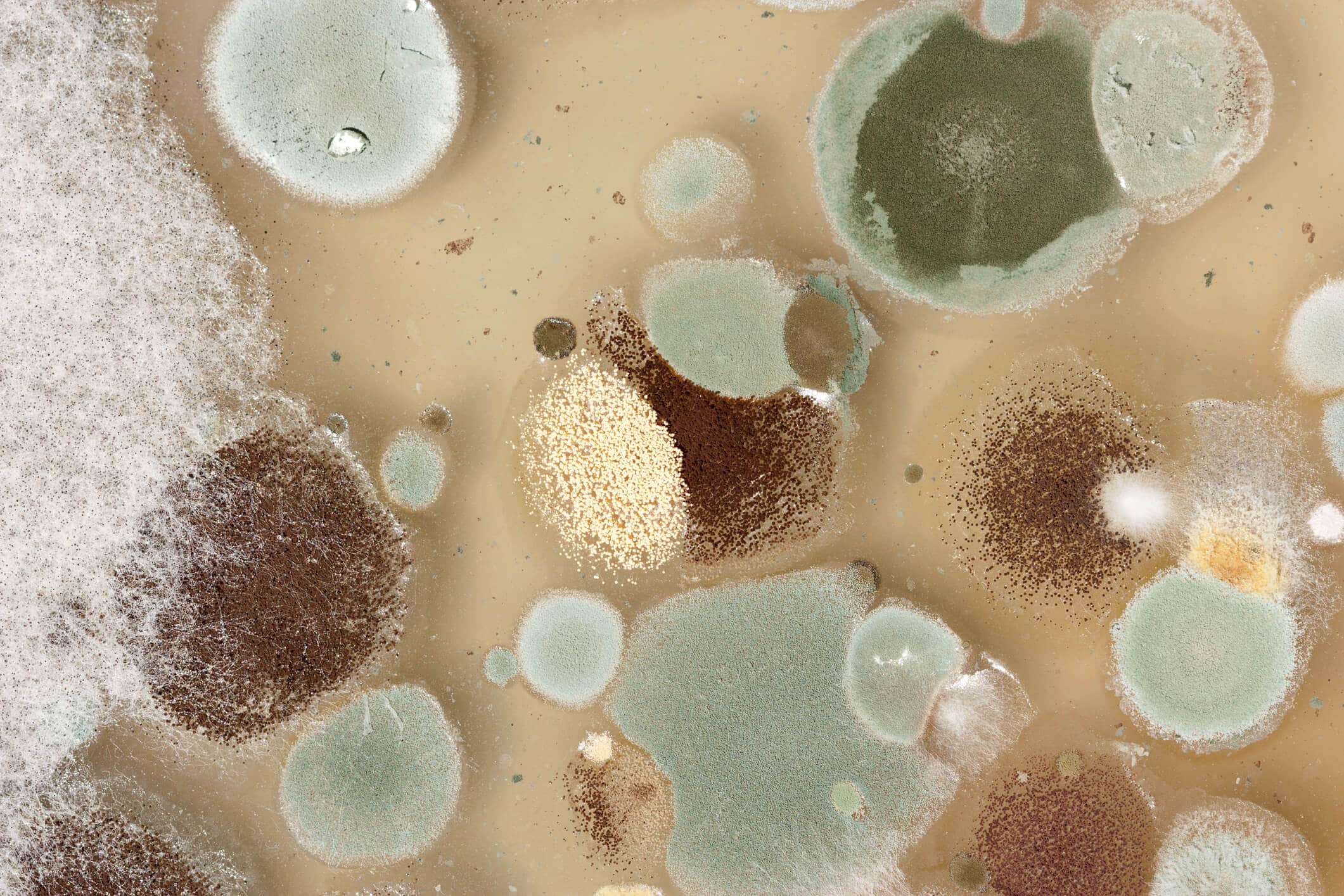
WHAT DOES MOLD IN A WATER BOTTLE LOOK LIKE?
With over 100,000 species of mold, they come in all shapes, sizes, and colors. Think of it like the Skittles of nature. That means that mold in a water bottle can be green, grey, brown, black, yellow, red, white, or a mixture of any of those colors.
An important note is that no single color of mold represents a “dangerous species.” Toxic black mold is the most commonly known fungus, but while that refers to Stachybotrys chartarum, many other species can look dark in color. Aspergillus, a “common mold,” isn’t naturally toxic, but it can produce mycotoxins and trigger a condition called Aspergillosis in those exposed.¹¹
That’s why any mold growth, regardless of color, should be taken care of immediately and properly. Otherwise, there’s a potential for adverse health reactions.
WHAT DOES MOLD IN A WATER BOTTLE SMELL LIKE?
Mold often creates an earthy, musty, and/or damp odor while growing. If you start to notice this smell coming from your water bottle, it’s a pretty good indication that something funky is going on within the container.
Use a flashlight to see if anything is visible, but keep in mind that it could be growing in a hidden location, be a color that blends in with the bottle, or be still in the microscopic stage and isn’t quite visible to the naked eye yet.
NO VISIBLE INDICATORS OR WEIRD SMELL
In this case, you’re still not quite out of the woods. Since mold spores are microscopic, it takes some time for them to build up into a visible mold colony. And, not all mold growth creates a smell. That’s why it’s important to pay attention to how we feel. Chronic symptoms that just never seem to go away and can’t be diagnosed by a doctor may be caused by environmental factors like mold exposure.
Our bodies are phenomenal warning systems. If you feel unwell every time you drink out of the bottle, that’s your body’s attempt to alert you that something is wrong. Listening to that warning signal is crucial so that the exposure does not continue.
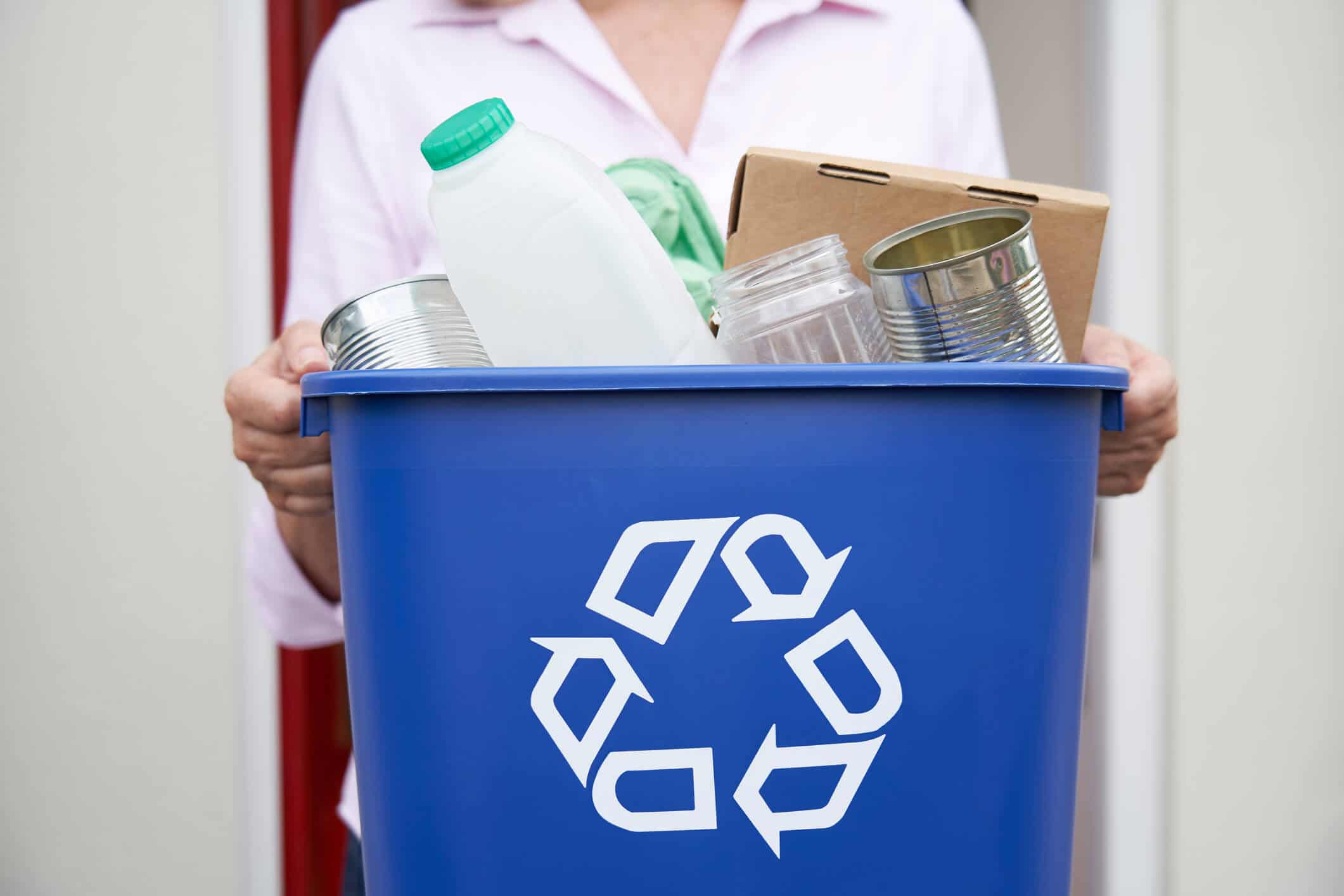
HOW TO GET RID OF MOLD IN A WATER BOTTLE
Whether you’re staring at a visible colony or you suspect there’s a problem, mold in a water bottle should be treated by simply throwing out the container and purchasing a new one. While you may be attached to that specific bottle, moldy particles are also attached to it as well. They may not be visible, but the entire time that colony was growing (which could be way longer than you think), it was producing spores and potentially toxins as well.
That means that every surface inside and outside is more than likely covered in contamination.
You can attempt to remediate the mold and get rid of all of those contaminants, but the chances of many of those particles being left behind are high. Mycotoxins and bacteria are particularly difficult to remove, and when you’re dealing with hard-to-reach areas, it can be nearly impossible.
Considering this item touches your mouth continuously throughout the day, it’s best to just err on the side of caution and toss the entire bottle. That way, you can be 100% certain you’re no longer dealing with mold in a water bottle every time you take a sip.
HOW TO PREVENT MOLD IN A WATER BOTTLE
The best way to handle mold is to prevent it from growing in the first place, especially when it comes to water bottles. Following the steps below can help ensure you’re not drinking moldy water.
1. WASH THE BOTTLE EVERY DAY
Throughout the day, you introduce lots of little particles to your water bottle, like bacteria, viruses, and organic matter. To help prevent buildup and ensure they stay clean, wash the bottle with a gentle cleanser and water or throw it in the dishwasher (if possible) every night. Use a bottle brush to reach every part and grab a small brush if necessary for any hard-to-reach cracks and crevices.
Make sure to allow the bottle to dry completely before reassembling. Remember, mold can grow in as little as 24 hours, so removing the water removes the ability for a spore to move into your bottle.
If you can’t clean the water bottle every day, aim for every other day at the minimum. The more frequently it’s cleaned, the better.
2. DEEP CLEAN ONCE A WEEK
Sometimes, spores and particles manage to sneak in even with daily cleaning. That’s why deep cleaning is super important.
TOOLS NEEDED
- Gloves
- White vinegar
- Microfiber towel
- Bottle Brush
One thing you do not need is bleach. This harsh chemical is not your friend when it comes to anything related to mold.¹²
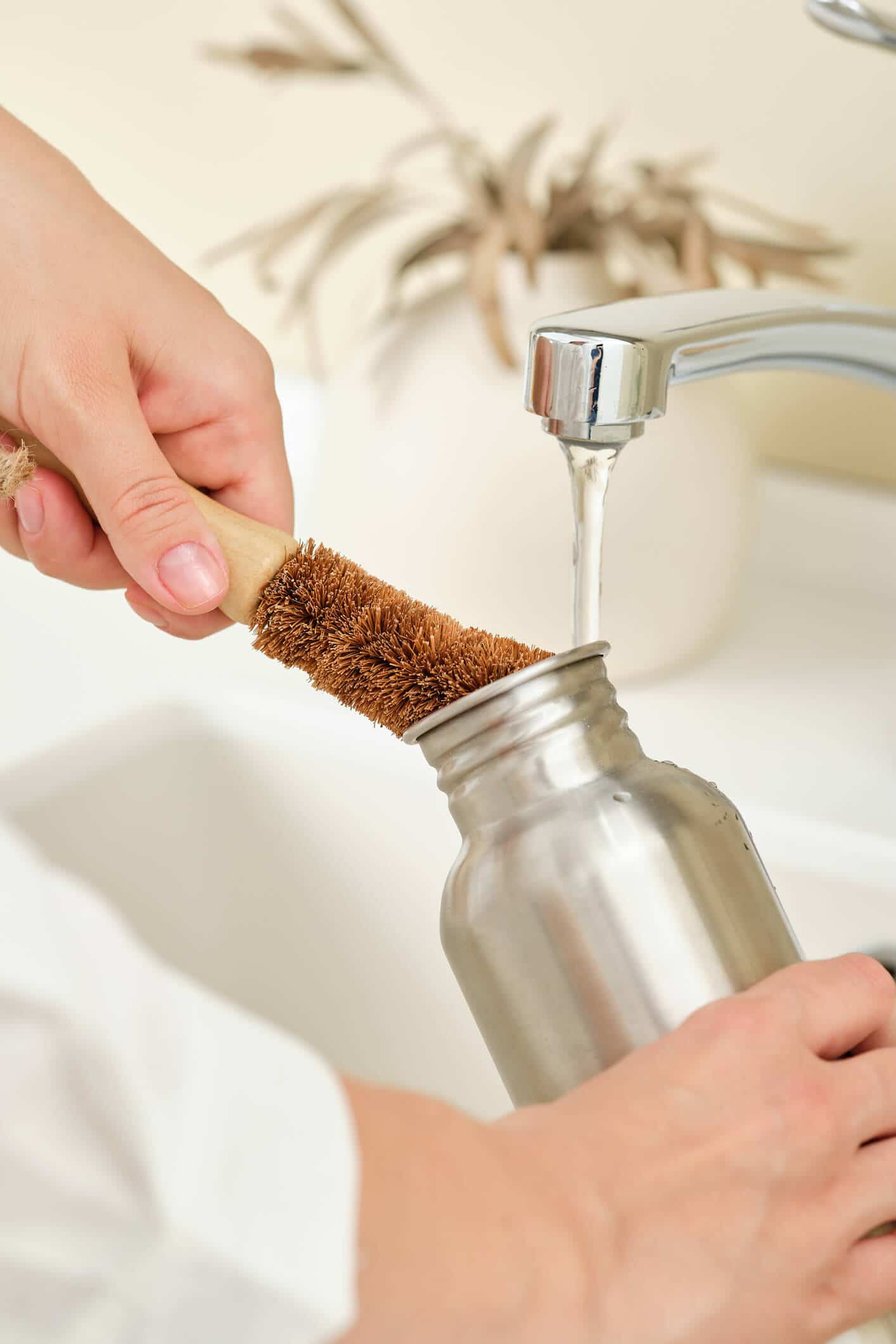
After throwing on the gloves, disassemble the water bottle completely and scrub every part with vinegar. Use that bottle brush and the smaller brush as well, if needed. Then, soak all of the parts in the vinegar overnight.
The next morning, wipe everything off with a microfiber towel. These are 100 times better at wiping away microscopic particles than regular rags. From there, wash the bottle with soap and water to remove any lingering vinegar.
STICK TO THE SHELF-LIFE
There’s no tried-and-true date for when to replace water bottles. When it comes to plastic water bottles, the general consensus for replacement is around the one-year mark. For metal water bottles, it’s more determined by everyday wear and tear; the more battered they are, the faster they should be replaced.
An older or well-worn-in water bottle offers more opportunities for mold to start growing. Any sort of minuscule crack, crevice, or hole provides a nice secluded home for not only mold growth, but also bacteria and viruses. Being that they’re difficult areas to clean, those particles aren’t going to want to leave once they’ve found their way inside. The older the bottle is, the more this problem will develop.
To avoid an icky and contaminated situation, make sure to keep a close eye on the state of the water bottle and replace them when necessary.
STAYING HYDRATED AND HEALTHY
Moldy water isn’t just icky; it’s bad for our health. Doctors definitely didn’t have moldy water in mind when they were encouraging better hydration…
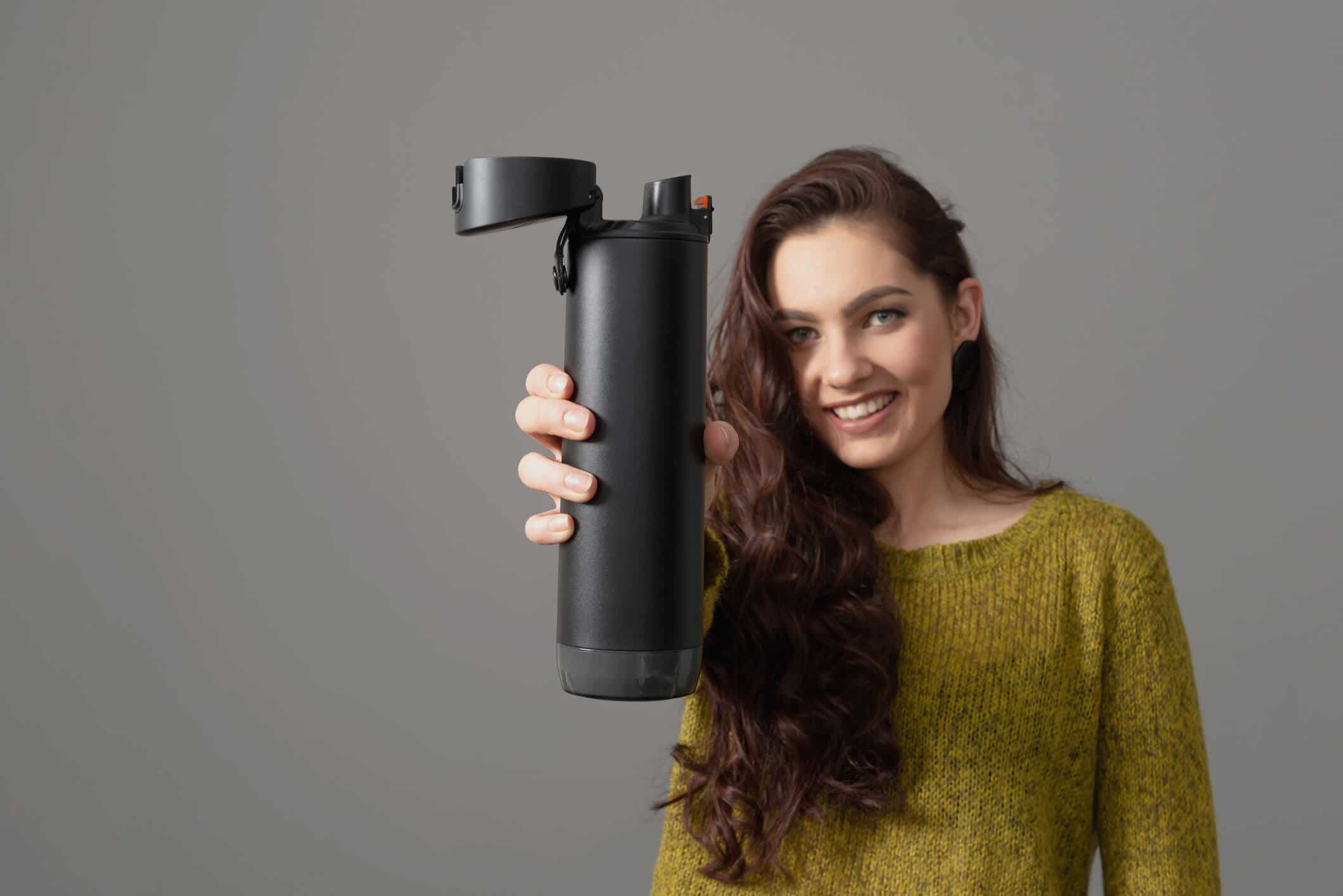
Society may not discuss mold very often, but that doesn’t mean we shouldn’t be aware of hotspots where mold loves to grow. Since one such place happens to be our beloved water bottles, it’s up to us to actively work on preventing this fungus among us from contaminating our H20. Clean water doesn’t just stop at filtration; it also extends to the bottle itself.
Let’s give our bodies the water they need and deserve.
Health begins at home.™
- Environmental Protection Agency. (n.d.). Mold. EPA. Retrieved from https://www.epa.gov/mold.
- Centers for Disease Control and Prevention. Basic facts about mold and dampness. Centers for Disease Control and Prevention. Retrieved from https://www.cdc.gov/mold/faqs.htm.
- Lstiburek, J., Brennan, T., & Yost, N. (2002, January 15). Rr-0208: What you need to know about mold. Building Science Corporation. Retrieved from, https://www.buildingscience.com/documents/reports/rr-0208-what-you-need-to-know-about-mold/view.
- World Health Organization. (n.d.). Mycotoxins. World Health Organization. Retrieved from https://www.who.int/news-room/fact-sheets/detail/mycotoxins.
- Environmental and Occupational Health Assessment Program, & Environmental and Occupational Health Assessment Program, & Health Science Section, Mold Basics for Primary Care Clinicians (2009). Hartford, CT; Connecticut Department of Public Health. , H. S. S., Mold Basics for Primary Care Clinicians 1–10 (2009). Hartford, CT; Connecticut Department of Public Health.
- Curtis, L., Lieberman, A., Stark, M., Rea, W., & Vetter, M. (2004). Adverse health effects of indoor molds. Journal of Nutritional & Environmental Medicine, 14(3), 261-274.
- Bush, R. K., Portnoy, J. M., Saxon, A., Terr, A. I., & Wood, R. A. (2006). The medical effects of mold exposure. Journal of Allergy and Clinical Immunology, 117(2), 326-333
- Fisk, W. J., Lei-Gomez, Q., & Mendell, M. J. (2007). Meta-analyses of the associations of respiratory health effects with dampness and mold in homes. Indoor air, 17(4), 284-296.
- Wild, C. P., & Gong, Y. Y. (2010). Mycotoxins and human disease: a largely ignored global health issue. Carcinogenesis, 31(1), 71-82.
- EPA. (n.d.). Health and Environmental Effects of Particulate Matter (PM). EPA. Retrieved from https://www.epa.gov/pm-pollution/health-and-environmental-effects-particulate-matter-pm.
- CDC. (2021, May 7). Aspergillosis. Centers for Disease Control and Prevention. Retrieved from https://www.cdc.gov/fungal/diseases/aspergillosis/index.html.
- EPA. (n.d.). Should I use bleach to clean up mold? EPA. Retrieved from https://www.epa.gov/mold/should-i-use-bleach-clean-mold.
Still Have Questions?
A member of our team is here to help! Click on “Get Started ➤” below to book a consultation with a member of the HOMECLEANSE team. We have a few quick questions that will help us put together a roadmap to solve or prevent all of your mold problems.
Two minutes of your time could lead to better health for you and your family.
" " indicates required fields
Must-Have Indoor Air Quality Tools
-

EC3 Laundry Additive
$23.00 SHOP NOWAdd EC3 to every rinse cycle to rinse away mold, bacteria and musty odors from...
-
Sale

Intellipure Compact Air Purifier
Buy one Compact, get one free. Simply add one to your cart, and a second...
4 interest-free payments or as low as $18/mo with Affirm. Check your purchasing power
Original price was: $299.00.$199.00Current price is: $199.00. SHOP NOW -

Intellipure SuperV Whole House Air Purifier
Turn your HVAC into a filtration system, removing 99% of ultrafine particles including airborne mold,...
Starting at $70/mo or 0% APR with Affirm. Check your purchasing power
$2,000.00 – $2,995.00 SHOP NOW -

HomeCleanse Cleaning
Take your cleaning to the next level buying all the tools we use to keep...
Starting at $27/mo or 0% APR with Affirm. Check your purchasing power
$299.00 – $549.00 SHOP NOW -

Mold & Bacteria Contents Cleaning
Remove harmful pollutants that accumulate in the dust of your home. (Options available for renters...
4 interest-free payments of $25 with Affirm. Check your purchasing power
$99.00 – $349.00 SHOP NOW -

EC3 Mold Solution Concentrate
$33.00 SHOP NOWMicro Balance EC3 Mold Solution Concentrate is a natural botanical that removes mold spores, bacteria,...
-
Sale

Industry-Leading Intellipure Ultrafine 468
The Intellipure® Ultrafine 468 features our proprietary DFS technology, which traps and eliminates potentially harmful...
Starting at $46/mo or 0% APR with Affirm. Check your purchasing power
Original price was: $999.00.$499.00Current price is: $499.00. SHOP NOW -

The Dust Test
The Dust Test is a comprehensive at-home test that helps you identify mold and toxins...
Starting at $25/mo or 0% APR with Affirm. Check your purchasing power
$274.00 SHOP NOW -
Sale

EuroClean 4 Gallon Hepa Vacuum
The Euroclean GD930HSP is a 4 Gallon Dry HEPA Vacuum that meets the EPA's standards...
Starting at $56/mo or 0% APR with Affirm. Check your purchasing power
Original price was: $849.00.$619.00Current price is: $619.00. SHOP NOW -

AprilAire E080 Professional Dehumidifier Bundle
Includes all the dehumidifier accessories you will need. Our Aprilaire E080 comes with a drain...
Starting at $94/mo or 0% APR with Affirm. Check your purchasing power
$1,499.99 SHOP NOW
